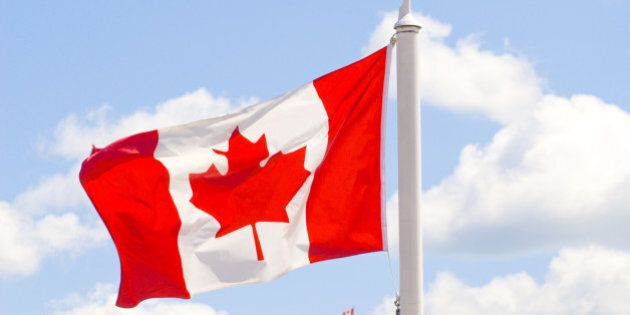
Canada's official development assistance (ODA) statistics portray us as a decent and generous aid-giver. For example, in the past five years Canada's total ODA amounted to an impressive USD24.5 billion. This is no small change. Calculated on an annual basis, Canada's ODA in 2009 was USD4.5 billion; USD4.9 billion in 2010; USD5.9 billion in 2011; USD4.7 billion in 2012 and USD4.5 billion in 2013.
Canadian empathy is illustrated by the fact that Sub-Saharan Africa (SSA) receives the largest share of Canada's bilateral development assistance. SSA is home to the world's poorest countries. Of forty two countries classified as 'low human development' thirty five are in SSA. Canada's bilateral aid to the region in 2013 amounted to USD1.4 billion, with Ethiopia -- the single biggest beneficiary of Canadian aid -- receiving USD131 million. Asia which is the second largest recipient of Canada's assistance received USD1 billion.
Canada's development assistance to SSA is also channelled through multilateral institutions, and as the world's poorest sub-region, the region receives the bulk of grants and concessional loans. For SSA, key players in aid delivery include the International Development Association (IDA) of the World Bank Group, and the African Development Bank (AfDB) together with its African Development Fund. Canada is a major funder of these institutions. In 2013, Canada's contribution to the World Bank Group was USD518 million, while the AfDB Group received USD133 million. Again, these are significant amounts of financial resources.
On close examination, however, it becomes evident that not only is Canada's approach to development assistance outdated, it is outright embarrassing and risks ruining Canada's international reputation. I often use the term "lost in transition" to describe aid that barely gets to its intended beneficiaries, a concept that is appropriate for Canada's case. Even when poorly conceived and executed aid gets to the recipient, it often does more harm than good. I am talking here about aid dispensed by bureaucrats in a developed countries to another set of bureaucrats in the receiving country. Such aid does little in advancing what is most needed for ending aid altogether -- growth of the private sector or public investments that facilitate the private sector both of which creates prosperity that leads to weaning off aid.
Now look at the sub-categories of Canadian aid for the year 2013, and tell me if we Canadians should not be embarrassed by our "assistance." Experts and other technical assistance alone consumed USD292 million. Administrative costs took another USD259 million. What is described as "other in-donor expenditures" swallowed USD212 million. Scholarships and student costs in donor countries took USD150 million, while "imputed student costs" consumed an additional USD141 million. These costs add to an astonishing USD1 billion that most likely never left Canada. Suddenly, the impressive amounts of aid evaporate.
Meanwhile the amount of the 2013 Canadian ODA that was targeted to either the private sector or other non-government bodies in the recipient countries is, shall we say, too meagre. "Core support to public-private partnerships," was a mere USD.042 million, while "core support to NGOs, other private bodies, PPPs & research institutes" amounted to a pitiful USD23 million. It seems to me Canada needs to rethink its aid philosophy and practice.
Canada has enormous capacity and lessons to share with the developing world that can assist the latter to embark on genuine social and economic transformation - as opposed to handouts. Take, for example, energy infrastructure. Canada's power sector played a vital role in this country's social and economic takeoff in the late 19th century. Today Canada is among the world's top producers of hydroelectricity and has in the past decade made crucial strides in green energy. The unbundling of generation, transmission and distribution that has fostered a more competitive power market is a crucial innovation Canada is famous known for.
These are fields in which Canada can proudly contribute to SSA and other developing regions -- power expertise, management and smart policymaking to enable ODA beneficiaries to turn their own natural resources into tools for development, just like Canada did.
Innovative models for near-term results and long-term impact are on the minds of many world leaders who are determined to abandon discredited conventional approach to ODA. A recent example is the case of US President Barack Obama who launched Power Africa in 2013. Power Africa is a new approach in the sense that it turns conventional aid on its head. The model is not government-centric but rather leverages US energy technologies, private sector engagement, and policy and regulatory reforms. The key word is "partnership." And after one year of operation, American and African private companies engaged in Power Africa number forty eight. This is a good beginning no doubt.
The good news is that, in addition to the original amount of USD7 billion President Obama committed to the initiative, the World Bank, African Development Bank, and the Swedish Government have collectively contributed another USD9 billion to finance power generation and transmission. What is most crucial, however, is not the amount of money raised per se but the concept and commitment to a new way of thinking about ODA. Seventy percent of SSA's population -- 600 million people, or two out of three sub-Saharan Africans -- are forced to light fire and cook with scarce wood because they have no electricity. Addressing this is the best way to use ODA to build a foundation for development.
Come on Canada -- let us reform our development assistance for superior outcomes.